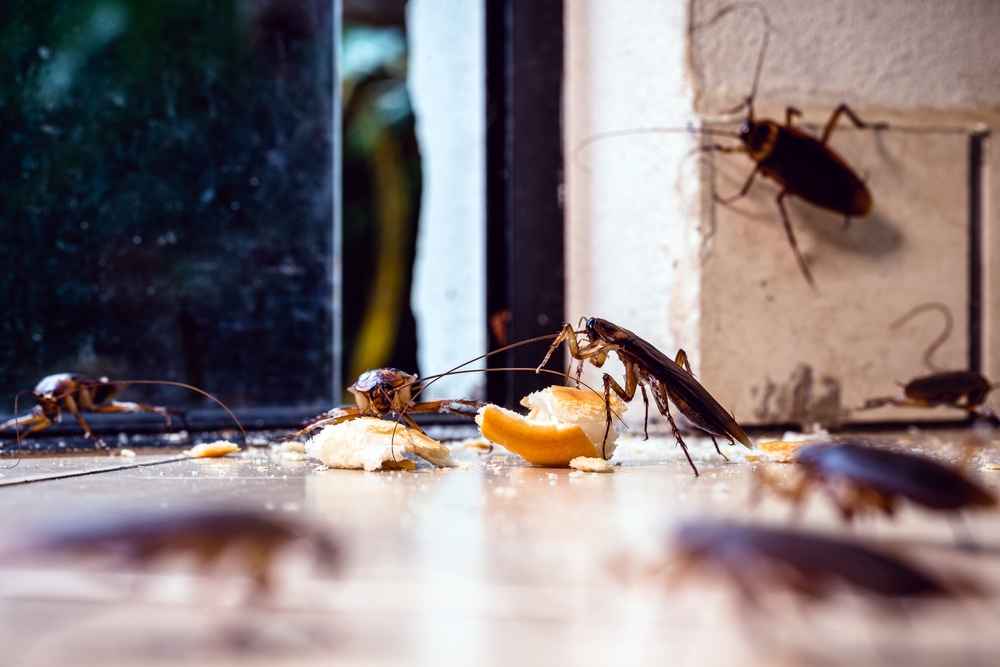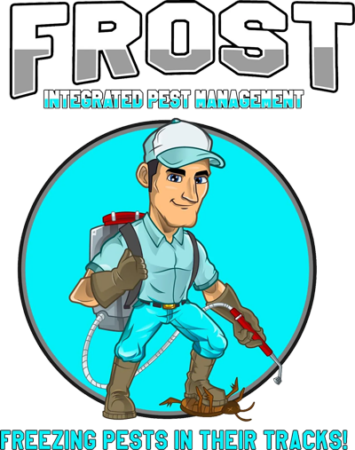Preventing Pest Problems in Portland Apartment Buildings and Multi-Family Units

Managing apartments and multi-family properties in Portland comes with unique challenges. The damp climate, fluctuating temperatures, and urban density make pest activity more frequent and often more difficult to control. Property managers, landlords, and residents alike know that even a small pest issue can escalate quickly in a multi-unit environment where infestations easily spread between apartments. Preventing pest problems in Portland apartments requires proactive planning, consistent monitoring, and coordinated action. With the right approach, apartment pest control in Portland can be handled in a way that minimizes risk, reduces tenant complaints, and maintains a healthy living environment.
Understanding the Pest Risks in Portland Apartments
The Pacific Northwest climate is both beautiful and challenging. Portland’s wet winters and mild summers provide ideal breeding grounds for a wide variety of pests. Ants, rodents, cockroaches, bed bugs, and spiders are all common issues, and each presents a different kind of threat to multi-family pest management. In apartment settings, once a pest colony establishes itself, it can spread through shared walls, vents, hallways, and utility lines. A rodent nest in the basement, for example, often leads to sightings on multiple floors within weeks.
Moisture is one of the key drivers of pest activity in Portland. Basements, crawl spaces, and shared laundry facilities are common hotspots because they often contain leaks, condensation, or standing water. Even minor plumbing issues can attract pests, especially cockroaches and rodents, which are drawn to both water and food sources. Because of the density of multi-family buildings, one resident’s poor housekeeping can contribute to pest problems for everyone else in the complex. Food left uncovered, garbage not properly sealed, or recycling bins not rinsed can all attract unwanted visitors.
Another factor to consider is Portland’s growing urban population. As apartment complexes expand and housing demand increases, pests adapt to survive in tighter spaces. Rats in particular thrive in cities, finding shelter in sewers, alleyways, and utility lines before moving into buildings when weather conditions change. Apartment pest control in Portland therefore requires not only addressing infestations when they occur but also anticipating the conditions that cause them.
The Role of Integrated Pest Management for Apartment Buildings
Traditional pest control has often relied on reactive measures: applying treatments when tenants report sightings. However, this method is less effective in apartment buildings, where infestations spread rapidly and often remain hidden until they are widespread. Integrated pest management for apartment buildings offers a far more sustainable solution. It combines monitoring, prevention, exclusion, sanitation, and targeted treatments into a single strategy designed to keep pests under control long-term.
Integrated pest management (IPM) emphasizes prevention over reaction. It starts with regular inspections to identify vulnerabilities before pests become a problem. Property managers and pest control professionals work together to seal cracks, repair leaks, and eliminate clutter where pests can hide. Instead of relying heavily on chemical treatments, IPM incorporates mechanical and environmental controls, such as traps, monitoring stations, and moisture management.
For multi-family pest management, IPM is especially valuable because it addresses the root causes of infestations. By involving tenants, landlords, and pest professionals in a coordinated effort, apartment communities create a consistent defense against pests. For example, tenants may be educated about proper waste disposal, while maintenance teams handle sealing entry points and managing landscaping around the building. Pest control specialists then monitor activity levels and apply treatments only when necessary, reducing chemical exposure for residents.
In Portland apartments, integrated pest management is not just a best practice but often a necessity. The city’s building codes and environmental regulations increasingly encourage greener, more sustainable pest control methods. IPM aligns with these standards while providing reliable results, making it the ideal approach for long-term apartment pest control in Portland.
Key Strategies for Preventing Pests in Portland Apartments
Preventing pests in Portland apartments requires a layered approach that addresses the many factors contributing to infestations. Each step helps build a stronger barrier against potential problems. The first step is exclusion. Sealing cracks in walls, doors, windows, and utility access points prevents pests from entering. Even small gaps can allow ants, mice, or spiders to move between units. Installing door sweeps, repairing torn window screens, and sealing utility line openings can greatly reduce entry.
Sanitation is another critical component. In multi-family housing, shared spaces such as hallways, laundry rooms, and garbage areas often become hotspots for pest activity. Regular cleaning schedules, well-maintained trash receptacles, and tenant cooperation are all necessary to minimize food and water sources. Apartment pest control in Portland often succeeds or fails based on how well sanitation practices are enforced.
Moisture management is particularly important in Portland’s damp climate. Property managers should ensure that gutters and downspouts are functioning properly, basements remain dry, and leaks are repaired immediately. Dehumidifiers and proper ventilation in laundry rooms and bathrooms can also help reduce conditions that attract pests. Landscaping also plays a role in prevention. Overgrown vegetation near the foundation of a building provides shelter for rodents and insects, while standing water in outdoor areas attracts mosquitoes. Keeping landscaping trimmed and properly maintained can make a big difference.
Regular inspections provide the foundation for preventing pest problems in Portland apartments. Pest professionals can set up monitoring stations to track rodent activity, use pheromone traps for insects, and provide detailed reports that help managers stay ahead of issues. Combining inspections with tenant education builds awareness and encourages residents to report sightings early. The sooner a potential problem is identified, the easier it is to resolve without widespread infestations.
Challenges Unique to Multi-Family Pest Management
Managing pests in multi-family housing comes with distinct challenges not found in single-family homes. The biggest difficulty is communication. Tenants may hesitate to report pests out of embarrassment or fear of being blamed, which delays intervention. By the time management becomes aware of the issue, it may have already spread across multiple units. Establishing clear communication channels, such as anonymous reporting systems or online portals, can help overcome this barrier.
Another challenge is tenant turnover. New residents may unknowingly bring bed bugs, cockroaches, or stored product pests with them when they move in. Without proper preventive measures, these pests can spread quickly to neighboring apartments. Routine inspections between move-ins and move-outs, along with strict cleanliness requirements, are necessary safeguards.
Budget limitations also play a role. Some property owners may hesitate to invest in comprehensive multi-family pest management strategies, opting instead for one-time treatments. While this may seem cost-effective in the short term, it often leads to more expensive problems down the line. Infestations that go unchecked can cause property damage, drive tenants away, and even result in fines if health codes are violated.
In Portland specifically, weather adds another layer of difficulty. Heavy rainfall drives rodents indoors, while warmer months increase ant and cockroach activity. Seasonal fluctuations require flexible pest control plans that adapt to changing conditions. Integrated pest management for apartment buildings accounts for these seasonal shifts by implementing year-round monitoring and preventive treatments timed to pest activity cycles.
Lastly, the social aspect of apartment living complicates pest management. With so many residents sharing walls and common spaces, cooperation is essential. A single tenant’s refusal to follow sanitation guidelines can undermine the efforts of everyone else. This makes tenant education and consistent enforcement of rules one of the most important yet most difficult aspects of preventing pest problems in Portland apartments.
Building a Long-Term Pest Prevention Plan
Long-term success in apartment pest control in Portland depends on developing a comprehensive plan that combines preventive maintenance, professional oversight, and tenant cooperation. The plan should begin with a professional assessment of the property, identifying structural vulnerabilities, sanitation issues, and existing pest pressures. Based on this assessment, property managers can work with pest control providers to create a schedule of inspections, monitoring, and treatments tailored to the building’s needs.
Education should be built into the plan. Tenants need clear instructions on how to store food properly, dispose of trash, and report pest sightings. Management can host workshops, distribute flyers, or include pest prevention guidelines in lease agreements. The more informed tenants are, the less likely they are to contribute to infestations.
Maintenance teams must also be trained to recognize early warning signs, such as gnaw marks, droppings, or unusual odors that may indicate pests. Their role in sealing entry points, repairing leaks, and keeping common areas clean is vital to multi-family pest management.
Partnerships with pest control professionals are another essential piece. Instead of waiting for emergencies, ongoing service contracts allow for regular monitoring and preventive treatments. Pest professionals can track seasonal trends, update management on emerging threats, and ensure that integrated pest management strategies remain effective.
Technology can further strengthen prevention efforts. Digital monitoring systems for rodents, for example, provide real-time data that allows managers to respond quickly before a problem escalates. Smart traps, moisture sensors, and even tenant reporting apps are becoming increasingly common in multi-family pest management.
Ultimately, a long-term pest prevention plan is about building resilience. Pests will always be present in some form, but with the right systems in place, apartment complexes can minimize risk, reduce costs, and provide tenants with a safe and comfortable living environment.
Conclusion
Preventing pest problems in Portland apartment buildings and multi-family units requires a proactive, coordinated approach that takes into account the city’s climate, urban density, and unique housing challenges. Apartment pest control in Portland is most effective when it focuses on prevention rather than reaction, with integrated pest management for apartment buildings providing the framework for sustainable results. By combining exclusion, sanitation, moisture control, inspections, and education, property managers can stay ahead of potential infestations.
Multi-family pest management also depends on strong communication, tenant cooperation, and a commitment to long-term planning. While challenges such as tenant turnover, seasonal weather shifts, and budget limitations exist, they can be overcome through consistent effort and professional partnerships. Preventing pests in Portland apartments is not just about protecting property; it is about ensuring the health, comfort, and satisfaction of every resident. With a comprehensive strategy in place, Portland apartment buildings can remain safe, clean, and pest-free year-round.
